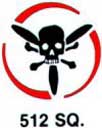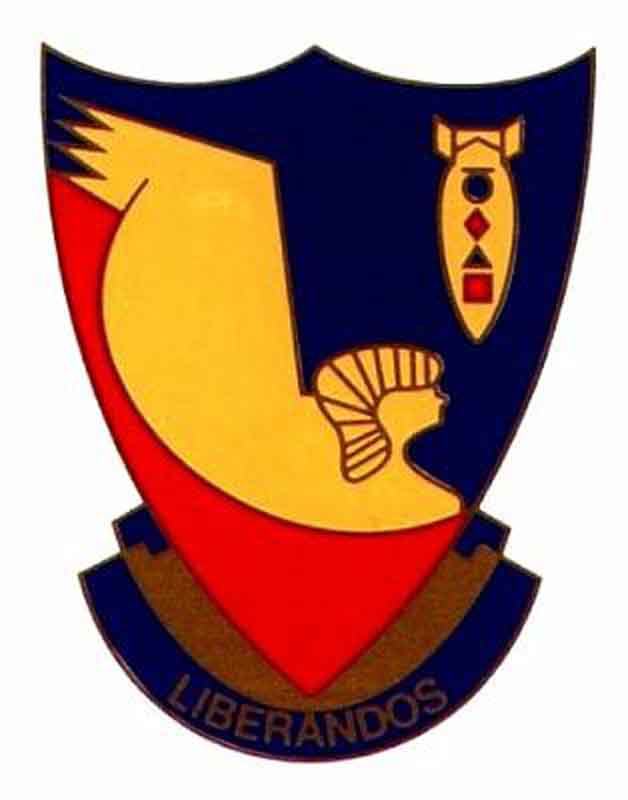Martin E. Metzler
Martin E. Metzler was a crew chief with HALPRO. The following is his account of his service:
AWARD OF THE LEGION OF MERIT
"For exceptional meritorious conduct in performance of outstanding service in North Africa and Italy from November, 1942 to May, 1944. As Line Chief, M/Sgt. Martin E. Metzler, during a most critical period of the Tunisian campaign and during the crucial early stages of the Italian campaign, exhibited unusual technical knowledge, inventive ability, initiative and relentless determination under most adverse conditions of heat, sand storms and mud, as well as lack of vital equipment and supplies. His ceaseless and untiring effort in the maintenance of aircraft, and his personal participation in combat missions, when complete crews were not available, were directly responsible for a large degree of the success of his Bomb Squadron in its operations against the enemy and reflect great credit upon himself and the AAF."
"While I was stationed at MacDill AFB, Florida, Consolidated Aircraft Corp. had manufactured a new four engine heavy bomber. I was one of the aircraft mechanics selected to go to Wright-Patterson Field in Ohio to perform accelerated service tests on one of the three new B-24C bombers, where I flew as a flight engineer on the numerous flight tests. The tests were flown to acquire the necessary information for the flight manual for this new hydraulic functional aircraft. B-17 Flying Fortress bombers, in contrast, were primarily electrical functional.
"On return to MacDill AFB I was assigned to the newly formed 98th Heavy Bombardment Group. The 98th Group staged for overseas deployment at Fort Meyer, Florida Municipal Airport, and received several of the new B-240 Aircraft.
"Col. Halverson and some men arrived and they were originally to fly three of the B-24 aircraft on a special mission, but eventually this was changed to twenty-four B- 24D aircraft. Volunteers were requested for air crews from the 98th Bomb Group, plus a crew chief mechanic for each aircraft. I volunteered for the project, and was assigned to Major Adams' air crew on B- 24D "Arkansas Traveler" as crew chief for ground maintenance. Each crew chief had a special list of specific items that the different aircraft contained, such as carburetor, magneto, etc., besides the normal spare parts each aircraft contained. Each aircraft also had two large baggage racks in the rear bomb bays for storage, two large 390 gallon fuel tanks in the front bomb bays, plus three small fuel tanks especially fitted into each outer wing. We called them "Tokyo Tanks."
"The 98th Bomb Group moved to Lakeland, Florida so we were now part of the expanded project Halverson called "Halpro" and continued to stage at Fort Meyers.
"May 20, 1942: Flight "A" with eight aircraft left for overseas, followed by "B" flight with our pilot, Major Adams. Flight "C" followed two days later with seven aircraft.
"Col. Halverson's "A" flight plane landed in Trinidad needing an engine change. The first aircraft to land from "B" flight was selected as his replacement aircraft. Our plane landed first, so we were to remain for the engine change to Halverson' s plane. After repairing the engine, we then flew on to Belize, Brazil, Africa and on to Karachi, India as previously ordered. Arriving there, we were then told to fly to Anglo-Egyptian Sudan and then to Fayid, Egypt where what was left of Halpro aircraft were. The special mission to bomb Japan from China was cancelled and our mission now was to bomb German General Rommel's Africa Korps and his supply line.
"Each Halpro aircraft had a combat crew, but when the flight engineer, tailor waist gunner could not make a mission, I volunteered to fly the mission as a replacement crew member.
"General Rommel's Africa Korps pushed our remaining Hal pro aircraft out to Egypt, and we moved into Lydda Airport near Tel Aviv, Palestine, where the First Provisional Group was formed from the remainder of Halpro aircraft and B-17s from Java and India. Major Adams' plane and his combat crew were sent T.D.Y. to Burma, and were shot down over Rangoon. We all had a very close relationship so I was extremely sorry to hear about their loss.
"Prior to the above, we were alerted that a German convoy had sailed form Greece, and that the convoy had one large ship said to be loaded with new tanks for the German Africa Korps. I happened to be part of the crew that day in the tail turret. Capt. Kirkaloy, our bombardier/navigator, had a malfunction problem directly over the large ship in the center of the convoy. The bomb release did not start to drop the bombs as planned when the indices met. He then pushed to salvo all the bombs. He called out, "Marty, watch where our bombs hit." The whole cluster fell on the rear of that big ship. A perfect strike. I believe he was recommended for a Distinguished Flying Cross Medal, which he richly deserved.
"When the Group was designated the 376th Heavy Bombardment Group, I was chosen as line chief of maintenance for the 512th Bomb Squadron, a great responsibility for a 24-year-old. Our original Halpro aircraft were green, while our new replacement aircraft were a pink color. Most aircraft like the "Strawberry Bitch" also had elaborate drawings on the sides, although I never did know who painted the artwork or where it was done. I do not remember how many bomb missions the "Strawberry Bitch" had, but we painted a small bomb on the nose for each mission. The "Bitch" came back shot up many times, but was always patched up and flew again.
"My most memorable day in the history of the 5l2th Squadron was at the end of December, 1943, when I and my maintenance crews sat waiting endlessly for our six aircraft to return from a mission to Vicenza, Italy. We lost all six of our aircraft that day, 5 1 4th Squadron lost two, 5 I 5th Squadron lost two, and all the crews. Ten of seventeen aircraft were lost on that mission.
"Word was received for rotation of enlisted men to return to the States, while we were stationed in San Pancrazio, Italy. Naturally, men from the original Halpro, being overseas over two years were to be sent back for B-29 Super Fortress training.
"I returned to the States and eventually to Biggs AFB, Texas, where I was awarded the Legion of Merit Medal."
Sincerely,
Martin E. Metzler (512)


The website 376bg.org is NOT our site nor is it our endowment fund.
At the 2017 reunion, the board approved the donation of our archives to the Briscoe Center for American History, located on the University of Texas - Austin campus.
Also, the board approved a $5,000 donation to add to Ed Clendenin's $20,000 donation in the memory of his father. Together, these funds begin an endowment for the preservation of the 376 archives.
Donate directly to the 376 Endowment
To read about other endowment donation options, click here.
Reunion
NOTE change in the schedule !!
DATES: Sep 25-28, 2025
CITY:Rapid City, SD
HOTEL: Best Western Ramkota Conference Hotel; 2111 North LaCrosse St., Rapid City, SD 57702; 605-343-8500
Click here to read about the reunion details.



















